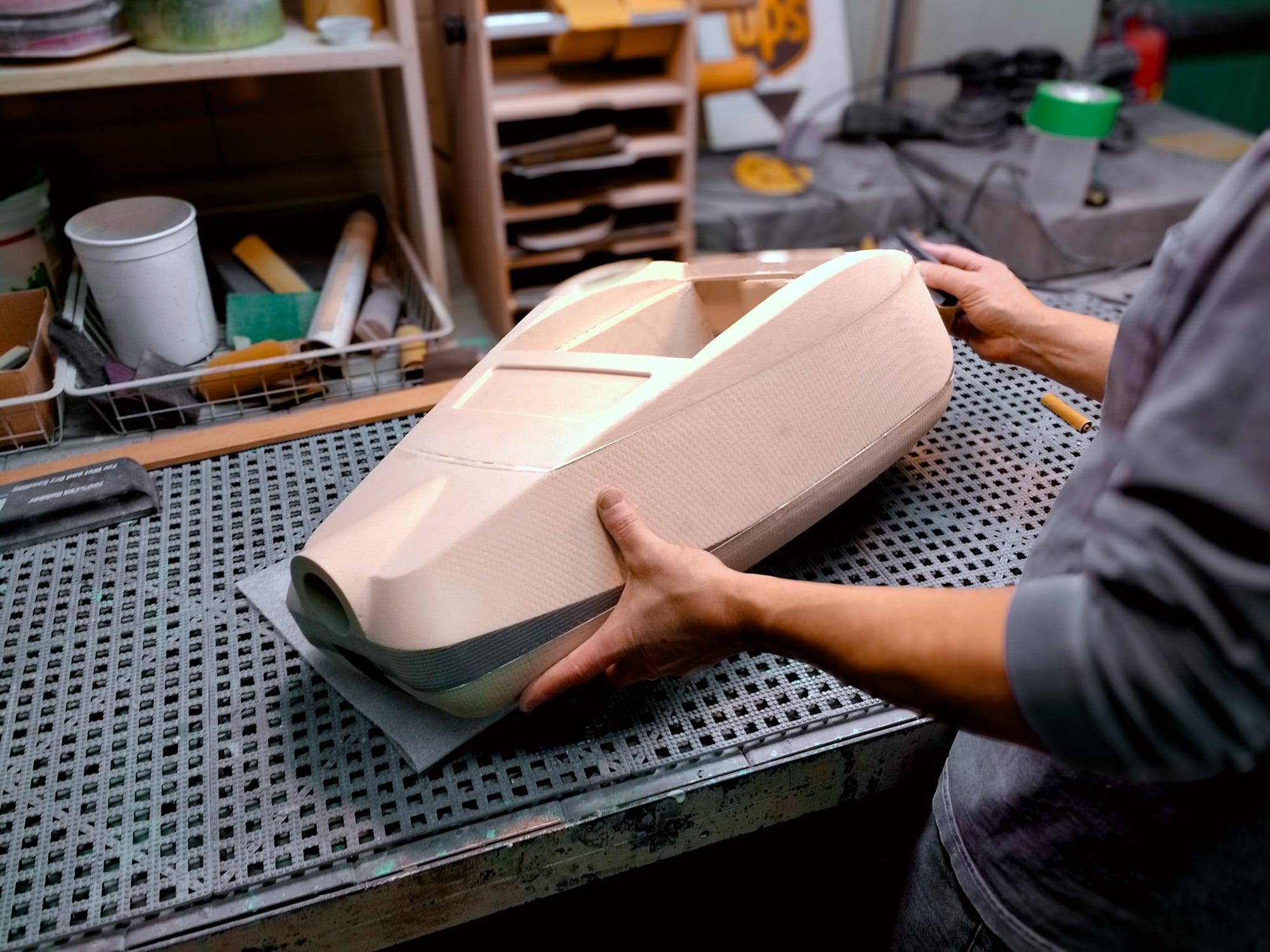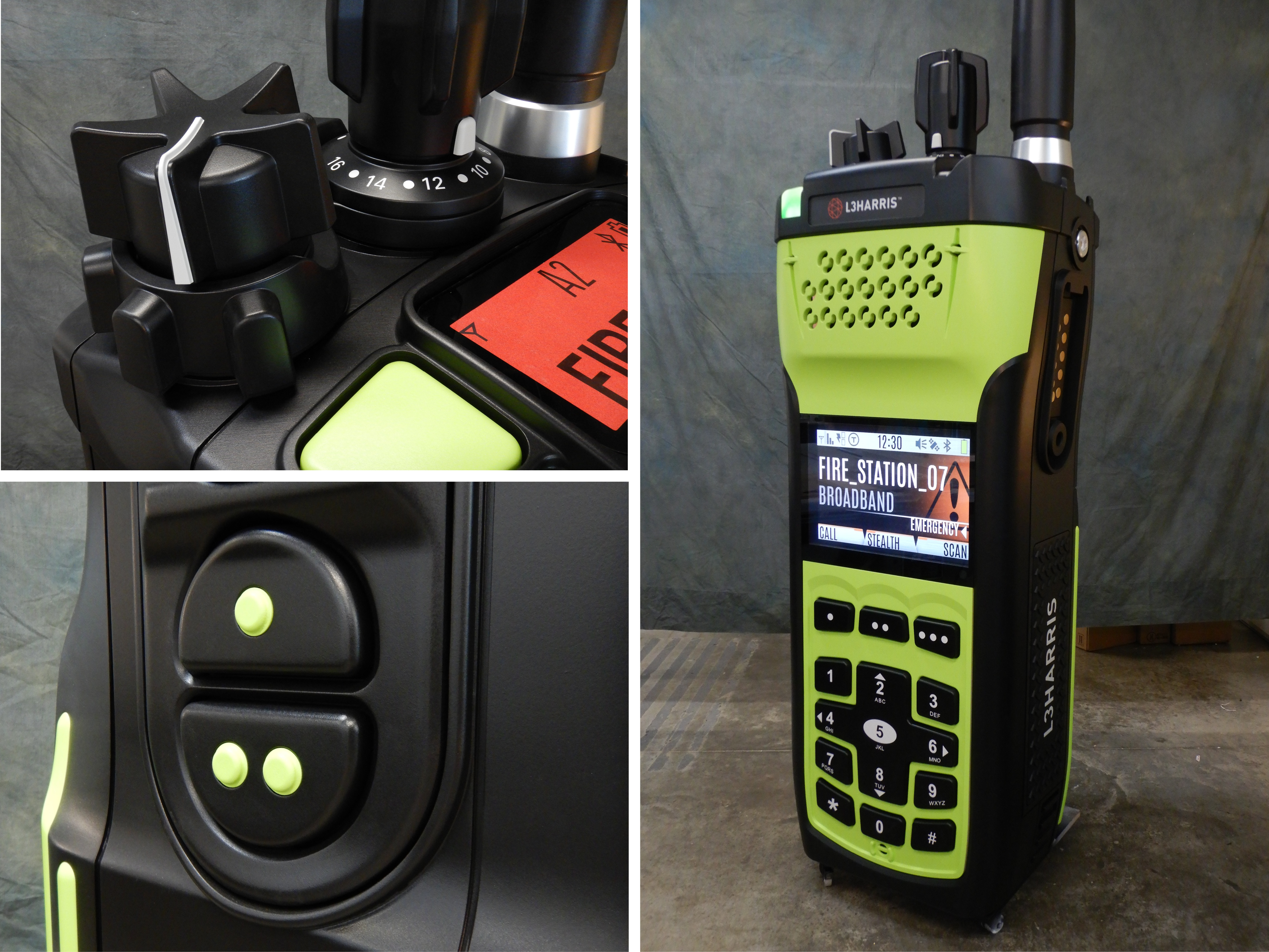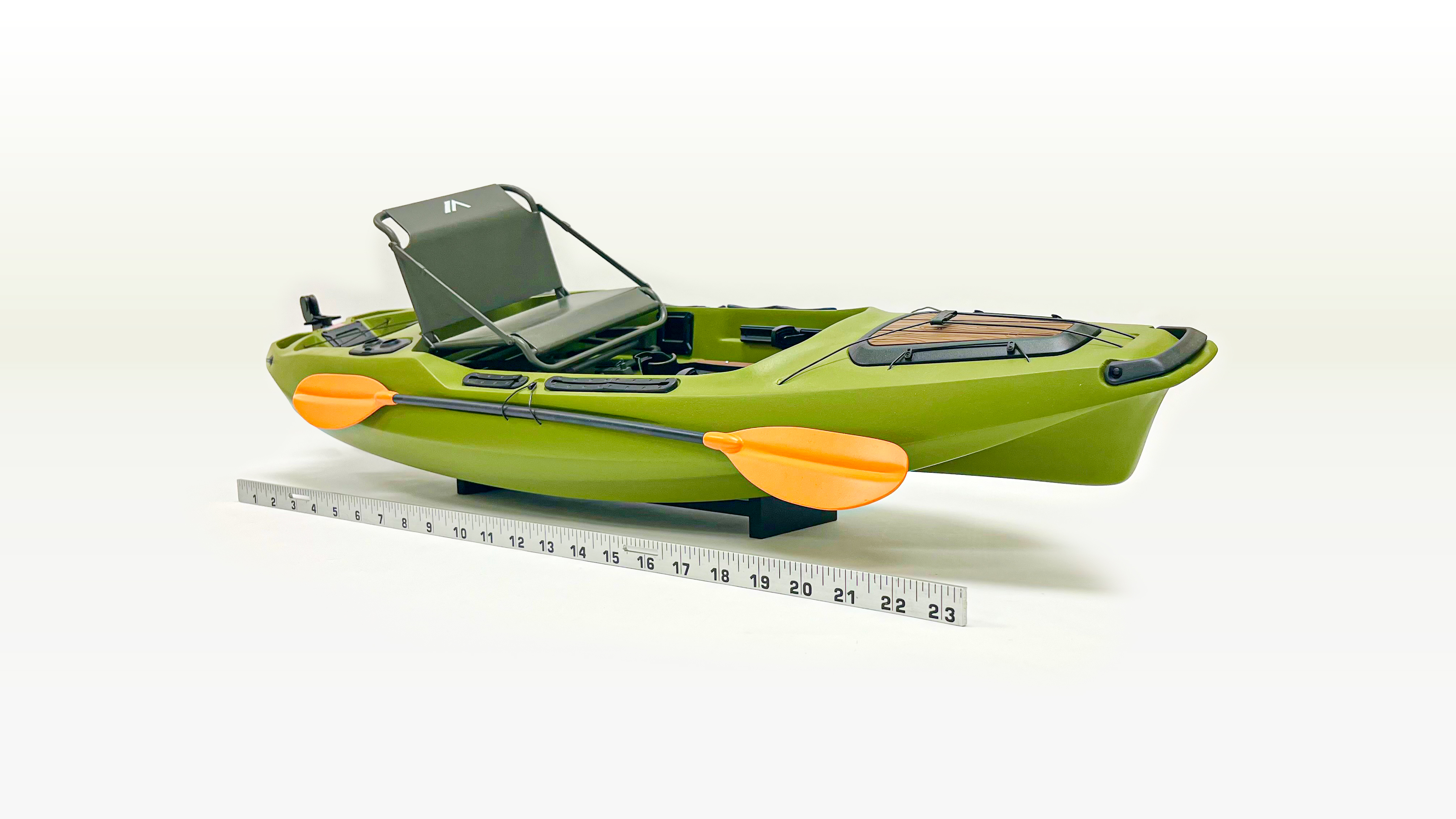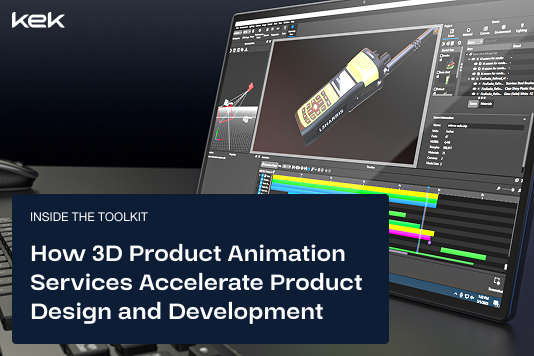A scale model is a physical representation of a product that’s built proportionally larger or smaller than the original. Scale models are used to bring ideas to life, whether that means shrinking a complex product for a sales meeting or enlarging a small device so it stands out on the tradeshow floor. Unlike digital renderings, scale models let people see, hold, and understand a product in three dimensions, making them powerful tools for communication, presentations, and strategy.
What Are Scale Models?
A scale model is a physical representation of a product, built proportionally larger or smaller than the original. These models are crafted to capture key visual and functional elements, often at a different size than the real thing. At KEK, we use them to communicate ideas with impact, to test concepts in physical space, and to help our clients see and share their vision in a tangible way.

Communicating at the Right Scale:
Sometimes a product is too large to carry into a pitch. Other times, it's too small to make an impression from across the room. Scale models solve both problems. By resizing the design without sacrificing accuracy or detail, we ensure your product can be seen, understood, and remembered, no matter the context.
Bringing Design to Life:
There’s a difference between imagining a product and experiencing it. Scale models turn abstract concepts into concrete, dimensional objects. Clients can hold them, examine proportions, and better understand form and function. They’re especially useful when digital tools fall short, like when a screen just can’t convey the same level of presence or realism.
Scale Models for Trade shows:
From investor meetings and trade show booths to stakeholder reviews, scale models add clarity and impact. They elevate presentations, prompt richer feedback, and help drive alignment. A well-executed scale model makes a product feel real, even before it hits the market.
Built In-House, Built with Intent:
Our in-house model shop gives us full control over quality, detail, and turnaround time. We craft scale models using a mix of digital fabrication, hand-finishing, and material experimentation, tailored to the purpose of the model. Whether rough or refined, functional or purely visual, each model is designed to serve a specific moment in the product development journey.

Frequently Asked Questions About Scale Models
What is a scale model in product design?
A scale model is a physical representation of a product that is built proportionally larger or smaller than the original. It captures the key visual and functional details so designers, clients, and stakeholders can see and understand the concept in three dimensions.
Why use a scale model instead of digital renderings?
Digital tools are great for visualization, but scale models allow people to experience a product physically. Holding a model helps stakeholders better understand proportions, presence, and functionality in a way that a screen can’t replicate.
When are scale models most useful?
Scale models are often used in sales presentations, investor meetings, trade shows, and strategy sessions. They help make a product memorable, prompt feedback, and provide a tangible point of reference.
How are scale models made at KEK Design?
KEK builds scale models in-house using a mix of digital fabrication, hand-finishing, and material exploration. Each model is tailored to its purpose — whether that’s a rough prototype for internal review or a refined showpiece for a trade show.
Final Thoughts
Scale models are storytelling tools. They allow our clients to present their products in ways that actual scale often can’t, whether that means shrinking a complex system to fit in a boardroom or enlarging a tiny device so it commands attention on the trade show floor. These models are designed to captivate, to communicate clearly, and to make a lasting impression. By thoughtfully adjusting scale without losing detail, we help our clients deliver a message that’s bold, clear, and impossible to ignore




